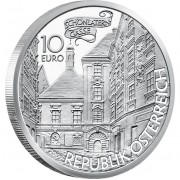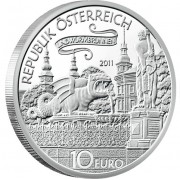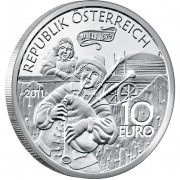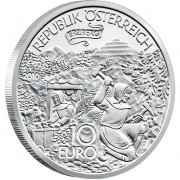- MINTS
- Australia "The Perth Mint"
- Mint of Finland
- Singapore Mint
- Mint of Austria
- Royal Dutch Mint
- Banco de Mexico
- Mint of Poland
- Mint of South Africa
- New Zealand Mint
- England "The Pobjoy Mint"
- Mint of Japan
- United States Mint
- Mint of Slovakia
- Other Mints
- Gold Coins
- Bronze Coins
- Copper Coins
- Silver Coins
- African Wildlife
- Angels
- Biblical Stories
- Christmas Coins
- Cities at Night
- Classical Painters
- Composers
- Coral Protection
- Dangerous Snakes
- Deep Sea Fish
- Disappearing Animals
- Famous Grand Operas
- Famous Pirates
- Flora & Fauna of the Pyrenees
- Great Commanders & Battles
- Greatest She Warriors
- Hanseatic League Sea Trading Route
- History of the Crusades
- Jelly Fish
- Masters of Europe
- Pilgrimage & Golden Rose
- Predator Hunters
- Prehistoric Art, Cave Paintings
- Prehistoric Wildlife
- Pyrenees Wildlife
- Rare Wildlife
- Religious People
- Sculptures of the World
- Single Issues
- Ten Commandments
- Venomous Spiders
- World of Frogs
- World of Insects
- COINS BY COUNTRY
- Andorra
- Armenia
- Australia
- Austria
- Belarus
- Benin
- British Virgin Islands
- Cameroon
- Canada
- China
- Congo
- Cook Islands
- Czech Republic
- Fiji
- Finland
- Germany
- Isle of a Man
- Ivory Coast
- Japan
- Kazakhstan
- Kiribati
- Korea North
- Korea South
- Laos
- Liberia
- Macao
- Malawi
- Mexico
- Netherland
- New Zealand
- Niger
- Niue
- Palau
- Papua - New Guinea
- Pitcairn
- Poland
- Singapure
- Somalia
- South Africa
- Togo
- Tokelau
- Tuvalu
- United Kingdom
- United States
- Vanuatu
- Coins by Weight and Metals
- Themed Coins
- Recent Releases
 Login
Login
- The Perth Mint Investment Coins
Gold Bullion Coins T here are two forms of 99.99% pure gold coins:The traditional Australian Ka... Read more >>>
- US Mint Silver Eagle Sales Jump 88% to a Record 3.2 Million on First Day of 2012
US Mint Silver Eagle Sales Jump 88% to a Record 3.2 Million on First Day of 2012 The US Mint has started 201... Read more >>>
- World's Biggest Coin- a Million Dollar value
Canada has seized bragging rights for the largest legal tender piece of money in the world, by issuing a coin with a fac... Read more >>>
Silver Coin RICHARD I, THE LIONHEART 2009 “Tales and Legends of Austria” Series
| Specifications | |
| Metal | Silver |
| Fineness (% purity) | 92.5 |
| Content (Troy OZ) | 0.5 |
| Denomination (EURO) | 10 |
| Weight (g) | 16.00 |
| Diameter (mm) | 32.0 |
| Year of Issue | 2009 |
| Country | Austria |
| Edge | Redeed |
| Quality | Proof or BU |
| Mintage | 30,000 (in uncirculated finish) 40,000 (in proof finish) |
| Package type includes | Red Box (for Proof), Blister (for BU) |
| Certificate of Authenticity | YES |
Also Available
Price includes FREE presentation gift coin box and FREE same day shipping. Only First Coin Company provide this options to our dear clients!
Richard I, The Lionheart
October 7, 2009 Vienna – The Austrian Mint issued today the second silver coin in its “Legends of Austria” series. The new coin is linked to an historical event that has also grown to become a famous legend, King Richard I of England, who was captured in Austria and then found by one of his minstrels.
The reverse of the silver coin depicts King Richard somewhat disguised in peasant dress of the period of about 1193, on the right side of the coin, in a restaurant just outside of the walls of the city of Vienna. Underneath his cloak one notes the richly embroidered three lions of the English royal house. On King Richard’s right hand is an elaborate signet ring. Behind him is a chicken roasting on a spit. On the left side of the design is Duke Leopold I of Austria, accompanied by two guards with axes, at the time of his capture. The cloak of Duke Leopold, as well as his vest shows the complex embroidered single headed Eagle of the Austrian kingdom of the time. Below the design are the words “Gefangennahme von Richard Lowenherz” or capture of Richard, Lionheart.
The obverse of the coin depicts the minstrel of King Richard I, known as Blondel, on horseback on the road travelling towards the castle of Duernstein on the Danube River. This side of the coin also has the country of issue “Republik Oesterreich” or Republic of Austria, the face value of 10 euros as well as the year of issue 2009.
The story of King Richard’s capture in Austria has grown over the centuries to become a very well known legend.
The first part of the story is indeed history. Richard, called the “Lionheart” even in his lifetime, seriously offended Duke Leopold V of Austria and the German knights in the crusader army by having the duke’s banner torn down from the walls of the captured city of Acre, (located in modern day Israel) and letting it be trampled in the dust. Thereupon the duke and the German contingent broke off from the army and returned angrily to Europe. The French king, who was ill and worried about his home territories, and didn’t get along with Richard either, soon followed them. When it came time
for Richard to return home, he knew Europe was seething with his enemies. He travelled without much fan fare and with only a handful of followers.
King Richard, on his return was then ship wrecked in the Adriatic Sea in 1192. He decided to travel overland and cut through the then dukedom of Austria, without asking permission of the ruler Duke Leopold V to cross his lands. King Richard disguised himself as a peasant and began his travels overland. Legend has it that he was recognized in a restaurant in Erdberg, a village just outside of Vienna, just prior to Christmas. He was probably recognized because of the expensive clothing under his peasant cloak and the expensive signet ring he was wearing. Legend also claims that
suspicions about who he was were raised because he demanded to have chicken, which very few peasants could afford. He may also have given himself away because he was said to have paid with expensive Byzantine gold coins from Constantinople.
Duke Leopold imprisoned Richard in the castle fortress of Duernstein high above the Danube River for almost a year. During this time negotiations ere undertaken with the Holy Roman Emperor, Henry VI, over the terms of the surrender of his royal captive and the sum of the king’s ransom, which they would jointly demand. The reason for his long captivity was that the various sovereigns of Europe as well as the Pope were negotiating not so much to secure his freedom but rather to have his head and thereby gain control of the kingdom of England.
During this time, his mother Eleanor of Aquitaine raised a great ransom for his freedom. Richard’s brother Prince John was only somewhat supportive of their mother’s effort since John would have preferred not so much to secure Richard’s freedom but rather take over Richard’s kingdom. However, through a multitude of taxes and confiscation from the churches a hefty ransom was paid.
The ransom is said to have been “6000 buckets of silver” or 100,000 Cologne marks, approximately 23 tons of silver or about 740,000 ounces. A princely sum indeed. The ransom was paid to the Duke Leopold and King Richard was once again free in 1193.
Legend has it that one of King Richard’s favorite minstrels, known as Blondel because of his hair, travelled through Europe to search for his master in captivity. King Richard had enjoyed composing songs with Blondel who used their songs to find his king. Blondel rode his horse and sing their songs all over Europe and eventually outside of the castle of Duernstein his master reply in key.
The ransom that was paid to the Duke became a very key part in the history of the Austrian Mint. Duke Leopold used part of the payment to refortify the walls of Vienna. More importantly for the Austrian Mint was the remainder of the silver, apparently some 22,000 ounces, which was used to found the Mint in Vienna.
The Austrian Mint founded in 1194, is Austria’s longest continually operating company with a history of 815 years.
The 10 euro silver coin is struck in 925 fine, or sterling silver, and is available in either of two finishes: proof with a maximum mintage of 40,000 pieces, or in special uncirculated, with a maximum mintage of 30,000 coins. The proof version comes in an attractive box with a numbered certificate of authenticity. The special uncirculated coin is sold in a colourful and informative bilingual (German and English) blister pack.
A special collection album for all six proof “Legends” coins that will be issued in this chapter of “Austrian and Her People” over the next three years is being produced and can be purchased separately. The album resembles a “classic” book of tales. The interior will house all six proof coins in capsules on the right side and the certificates of authenticity as well as the promotional brochure on the left side.
The Silver Coin RICHARD I, THE LIONHEART is a beautiful gift coin for Birthday or any special occasion for your loved one!
Nice and perfect gift!
| Specifications | |
| Metal | Silver |
| Fineness (% purity) | 92.5 |
| Content (Troy OZ) | 0.5 |
| Denomination (EURO) | 10 |
| Weight (g) | 16.00 |
| Diameter (mm) | 32.0 |
| Year of Issue | 2009 |
| Country | Austria |
| Edge | Redeed |
| Quality | Proof or BU |
| Mintage | 30,000 (in uncirculated finish) 40,000 (in proof finish) |
| Package type includes | Red Box (for Proof), Blister (for BU) |
| Certificate of Authenticity | YES |
Write a review
Your Name:Your Review:
Rating: Bad Good

 Australia "The Perth Mint"
Australia "The Perth Mint" Mint of Finland
Mint of Finland Singapore Mint
Singapore Mint Mint of Austria
Mint of Austria Royal Dutch Mint
Royal Dutch Mint Banco de Mexico
Banco de Mexico Mint of Poland
Mint of Poland Mint of South Africa
Mint of South Africa New Zealand Mint
New Zealand Mint England "The Pobjoy Mint"
England "The Pobjoy Mint" Mint of Japan
Mint of Japan United States Mint
United States Mint Mint of Slovakia
Mint of Slovakia Other Mints
Other Mints Andorra
Andorra Armenia
Armenia Australia
Australia Austria
Austria Belarus
Belarus Benin
Benin British Virgin Islands
British Virgin Islands Cameroon
Cameroon Canada
Canada China
China Congo
Congo Cook Islands
Cook Islands Czech Republic
Czech Republic Fiji
Fiji Finland
Finland Germany
Germany Isle of a Man
Isle of a Man Ivory Coast
Ivory Coast Japan
Japan Kazakhstan
Kazakhstan Kiribati
Kiribati Korea North
Korea North Korea South
Korea South Laos
Laos Liberia
Liberia Macao
Macao Malawi
Malawi Mexico
Mexico Netherland
Netherland New Zealand
New Zealand Niger
Niger Niue
Niue Palau
Palau Papua - New Guinea
Papua - New Guinea Pitcairn
Pitcairn Poland
Poland Singapure
Singapure Somalia
Somalia South Africa
South Africa Togo
Togo Tokelau
Tokelau Tuvalu
Tuvalu United Kingdom
United Kingdom United States
United States Vanuatu
Vanuatu Gold Coins
Gold Coins Niobium Coins
Niobium Coins Silver Coins
Silver Coins Bronze Coins
Bronze Coins Copper Coins
Copper Coins Platinum Coins
Platinum Coins Dragon
Dragon Love coins
Love coins SCIENCE
SCIENCE Snake
Snake Historical Events
Historical Events Unusual Shapes
Unusual Shapes Famous Persons
Famous Persons World
World Traditions
Traditions Religious
Religious Sport
Sport Calendar
Calendar Cosmos
Cosmos Transport
Transport Lucky Coins
Lucky Coins Nature
Nature Art
Art Zodiac Signs
Zodiac Signs Sets
Sets Fairy Tales
Fairy Tales























